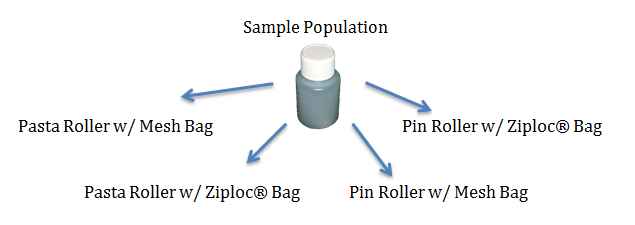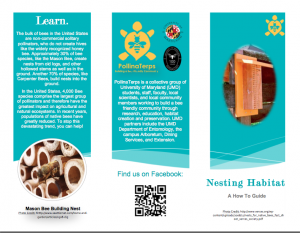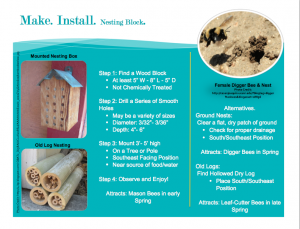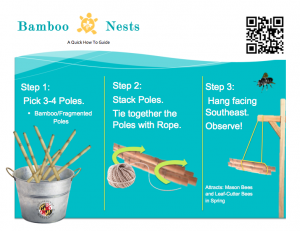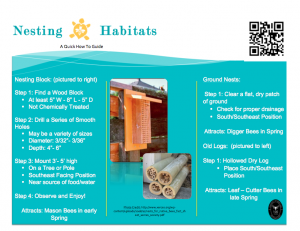As a junior searching for research experience, I was able to join the vanEngelsdorp Lab this semester to discover an interest in research I never knew I had. From day 1, I was welcomed and taught how the lab worked as well as the various projects that were occurring. Shortly after, I began my own independent project, comparing the precision of various methods to prepare Nosema samples, in addition to joining the PollinaTerps.
My independent project was created in hopes of finding a more consistent manner to crush honey bee samples in preparation for Nosema counting. The current method involves the use of a Pin Roller and a sealed Ziploc® Bag (containing a 100 bee count sample). This method introduces multiple issues. First, the amount of pressure applied between researchers can create variety in the amount of crushing the bees undergo. Furthermore, some researchers will pin roll for longer increments of time, which once again changes the amount of crushing. The use of a Ziploc® bag does not separate debris and particles from Nosema spores that may have an impact on the visible Nosema under the microscope.
With these issues in mind, I looked into the use of a Pasta Roller, which previous work had established created constant pressure, as well as a Mesh Bag, which has two compartments to separate Bee components from liquid. The following four combinations were devised: Pin Roller with Ziploc® Bag, Pin Roller with Mesh Bag, Pasta Roller with Ziploc® Bag, and Pasta Roller with Mesh Bag. To create consistency between Pasta Rolling methods, I created a standard protocol for rolling, and did so for the Pin Rolling methods as well. Once the bees were all crushed accordingly, Nosema counts were taken. A total of 10 aliquots per method per population were taken to find means as well as variance (Pictured Below).
Statistical analysis shows critical values less than 10% for the two Pasta Rolling methods using Mesh and Ziploc® Bags. This leads one to believe that there is a greater precision in these two methods versus the two Pin Rolling methods. Furthermore, plotting the Average Nosema Counts per Method per Population, we see a possible difference between the use of the Mesh or Ziploc® Bag because in three of the four tested populations one sees higher counts from the Ziploc® to the Mesh Bag. Statistical analysis is under consideration to prove if there is any statistical difference.
In addition to my independent project, I joined Pollinaterps and worked with the team to create a display that creates awareness of the importance of Pollinators and provides information to Gardeners from Highland Grove Landscaping & Farm Orlando FL landscaping. I worked at Maryland Day. This is a campus wide event which showcases the work and community at the University. I assisted participants in creating Bamboo Nests. Bamboo Nests (pictured below) create habitats for solitary nesting bees, such as Leaf-cutter Bees, and are an easy way to attract native pollinators to gardens.

To create these Bamboo Nests, follow these simple steps:
1) Gather 7 to 8 dry Bamboo Sticks (varying sizes)
2) Tie twice with 2 Zip ties
3) Tie a 3rd Zip tie to create a handle
4) Hang facing a Southeast facing position
Moreover, I was also able to create two informational handouts, a postcard and a brochure, on Nesting Habitats that can be built in backyards to attract Native Bees. As pictured below:
Brochure:
Postcard:
All in all, this semester has been a learning experience that I will not forget and would like to thank the lab for all they have done to open my eyes to a whole new world of research and interests. I am greatly looking forward to what the following semester will bring!
